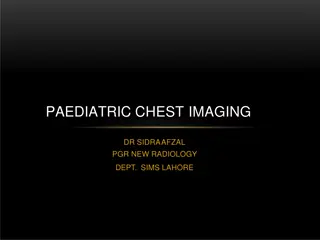
Understanding Penetrance, Odds Ratio, and Relative Risk
Explore the concepts of penetrance, odds ratio, and relative risk in the context of the BRCA1 gene and cancer predisposition. Learn about the implications of penetrance levels and how odds ratio measures the association between genetic variants and disease risk within different populations.
Uploaded on | 0 Views
Download Presentation

Please find below an Image/Link to download the presentation.
The content on the website is provided AS IS for your information and personal use only. It may not be sold, licensed, or shared on other websites without obtaining consent from the author. If you encounter any issues during the download, it is possible that the publisher has removed the file from their server.
You are allowed to download the files provided on this website for personal or commercial use, subject to the condition that they are used lawfully. All files are the property of their respective owners.
The content on the website is provided AS IS for your information and personal use only. It may not be sold, licensed, or shared on other websites without obtaining consent from the author.
E N D
Presentation Transcript
Penetrance, Odds Ratio, Relative Risk, and Beyond
BRCA1 gene and two populations NotCancer YepCancer 9 BRCA1 2 1 8 BRCA1*
BRCA1 gene and two populations NotCancer YepCancer 9 BRCA1 2 1 8 BRCA1* Penetrance: The proportion of individuals carrying a particular variant of a gene that also expresses an associated trait Or If a mutation in the gene responsible for a particular autosomal dominant disorder has 95% pentetrance, then 95% of those with the mutation will develop the disease. Penetrance for BRCA1*: 8/8+1=0.89
BRCA1 gene and two populations NotCancer YepCancer 9 BRCA1 2 1 8 BRCA1* complete penetrance. The allele is said to have complete penetrance if all individuals who have the disease-causing mutation the disease. highly penetrant. If an allele is highly penetrant, then the trait it produces will almost always be apparent in an individual carrying the allele. incomplete penetrance or reduced penetrance. Penetrance is said to be reduced or incomplete when some individuals fail to express the trait, even though they carry the allele. low penetrance. An allele with low penetrance will only sometimes produce the symptom or trait with which it has been associated at a detectable level
BRCA1 gene and two populations NotCancer YepCancer 9 BRCA1 2 1 8 BRCA1* the odds ratio("OR"). Is a measure of the effect size. It quantifies how strongly the presence or absence of property A (e.g. BRCA*) is associated with the presence or absence of property B (e.g. Cancer) in a given population. - For a given individual that has "B (Cancer) compute the odds that the same individual has "A (BRCA*) [ (A|B )= 8/2] - For a given individual that does not have "B"(Cancer) compute the odds that the same individual has "A . [ (A|B )=1/9] Divide the odds from step 1 by the odds from step 2 to obtain the odds ratio (OR). OR =36 The term "individual" in this usage does not have to refer to a human being, as a statistical population can measure any set of entities, whether living or inanimate.
BRCA1 gene and two populations NotCancer YepCancer 9 BRCA1 2 1 8 BRCA1* and Diseased (DE) = 8 and Healthy (HE) = 1 People Exposed (NE)= 9 and Diseased (DN) = 2 and Healthy (HN) = 9 People Not Exposed (NN) = 11 OR= (8*9)/(1*2) = 36 exp(L 1.96SE), exp(L + 1.96SE) to obtain a 95% confidence interval for the odds ratio
BRCA1 gene and two populations NotCancer YepCancer 9 BRCA1 2 1 8 BRCA1* (DE) = 8 (HE) = 1 the risk of developing the disease given exposure is DE/NE (NE)= 9 of developing the disease given non exposure is DN/NN (DN) = 2 (HN) = 9 (NN) = 11 The risk ratio or Relative Risk (RR), is just the ratio of the two = 4.89
RR and OR - if the disease is rare, - then OR RR - if the disease is NOT rare, where: RR = relative risk OR = odds ratio RC = absolute risk in the unexposed group, given as a fraction (for example: fill in 10% risk as 0.1)
Prioritizing mutations based on evolutionary models and fitness effects NotCa ncer YepCa ncer 9 BRCA1 2 1 8 BRCA1*
Prioritizing mutations based on evolutionary models and fitness effects NotCa ncer YepCa ncer 9 BRCA1 2 1 8 BRCA1* Including mutations with lower Penetrance
Now, with two CELL populations NotCa ncer YepCa ncer 9 BRCA1 2 1 8 BRCA1* - - Identify which mutations have a significant effect PER SAMPLE Identify which mutations significantly have an effect per Cancer Type
Models of Clonal Expansion Simple model More Complicated model** ** Talk later about this, for now assume the Simple model
Simple model Mutations in PIK3CA, FBN2, CASP3, PPP2R5E are significant
Simple model, mutation in FBN2 Time t Frequency t Fr(t)
Simple model, mutation in FBN2 Time t Frequency t Fr(t) Time y Time x T= x t = t - y and x < t < y
Simple model, mutation in FBN2 Time t K mutations L mutations L - K | r, N r=mutation rate N=population size Frequency t Fr(t) Time y Time x T= x t = t - y and x < t < y
Using a model under exponential growth Nx
Using a model under exponential growth FBN2 Nx
Using a model under exponential growth Nt= Nx*exp(-rx(t-x)) Ny=Nt*exp(-ry(y-t)) FBN2 Nx
Using a model under exponential growth Nt= Nx*exp(-rxT) Ny=Nt*exp(-rtT) If effect for FBN2, change in r and/or N (replication rate and/or replication time) FBN2 Nx
Using a model under exponential growth Nt= Nx*exp(-rxT) Ny=Nt*exp(-ryT) If no Math errors, - Optimize and compare N and r - according to log(Ny+N ) =(2rx+r )* +logNy across Patients (+Pancancer) - as a function of K and L (# of mutations) per sample and time frame FBN2 Nx
In the more complicated model Simple model More Complicated model** Identify Subclonal populations per sample first and then run the simple model for each
Genes with lower Penetrance based on short list
Genes with lower Penetrance based on short list


